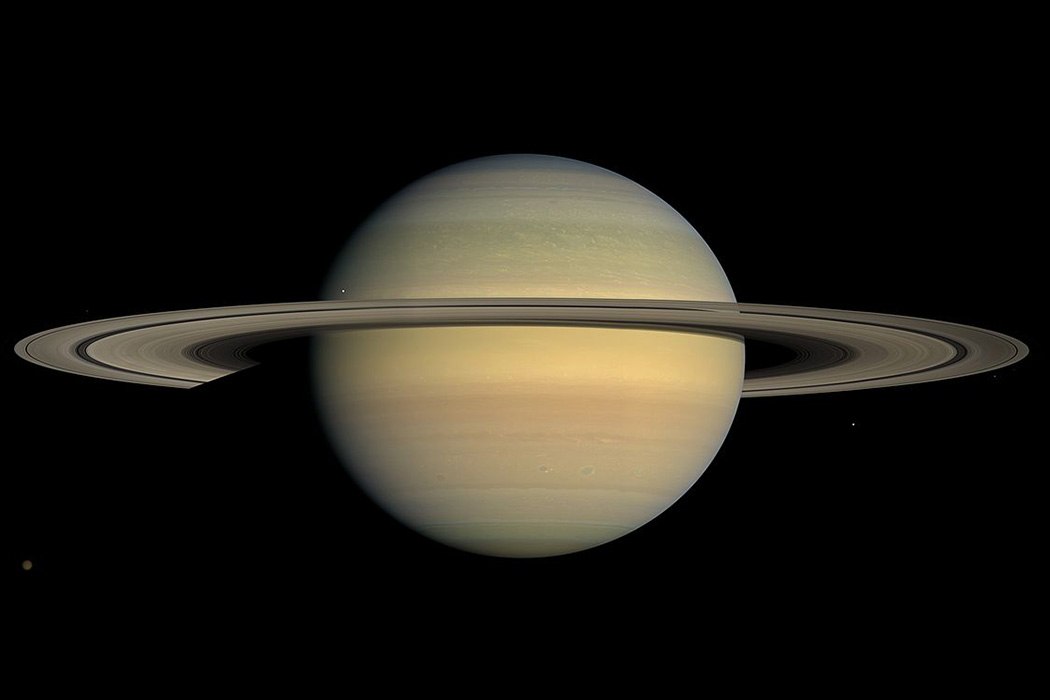Every school child will recognize a photo of Saturn. The squash-colored planet is orbited by distinctive rings, easily visible through a backyard telescope. Other planets in our system have rings, but none so bright and visible as Saturn’s. But how much do you really know about them?
The first modern astronomer to observe Saturn was none other than Galileo himself in 1610. Unable to make sense of what he was seeing (through poor seventeeth-century telescopes), Galileo thought that he was looking at a planet orbited by three large moons. It wasn’t until 1655 that the Dutch astronomer Christiaan Huygens realized he was looking at a thin ring circling the planet’s equator.
Subsequent observations by seventeenth-century astronomer Giovanni Domenico Cassini (and, more recently, his spacecraft namesake) demonstrated that the “ring” was actually several different rings in the same plane, separated by gaps. Currently there are seven known bands, cleverly named A, B, C, D, F, G, and E. The distance from the center of the planet to the outer edge of the rings is almost 500,000 km, but incredibly the rings are only a few meters thick. The rings are primarily made of water ice, dust, and rock, ranging from tiny dust-size particles to huge boulders.
The leading hypothesis explaining the rings’ origin is that a meteor or comet collided with a moon, obliterating both objects. The planet’s huge gravity flattened the debris into a disk. It’s not clear how long the rings can maintain their shape but they may be billions of years old.
When the Cassini probe examined the rings starting in 2004, patterns within the rings were revealed. Some areas have sharp edges, while others are scalloped. The culprit? Saturn’s fascinating moons. Some of the 53 moons are located near or even within the rings themselves. For example, the gravity from moon S2005 S1, now known as Daphnis, creates scalloped edges in the Keeler Gap, located within the A ring. In other cases, the moons’ gravities were stealing and returning ring particles, causing the rings to undulate up and down in a wavelike pattern. All of these forces are part of the gravitational interplay between the moons and the rings which helps the rings maintain their shape.
Weekly Newsletter
Even in their absence, Saturn’s rings stand out. Every now and then Earth passes directly through Saturn’s equatorial plane, so from Earth’s perspective the rings are viewed from the edge and basically disappear. Without the bright icy rings, it is easier to see hidden features. Many of Saturn’s moons were discovered during these rare dark transits.
Luckily for the contemporary amateur astronomer, the Cassini probe’s images of Saturn and its rings—including these incredibly detailed views of its A ring—are available and regularly updated on NASA’s special Saturn site.







